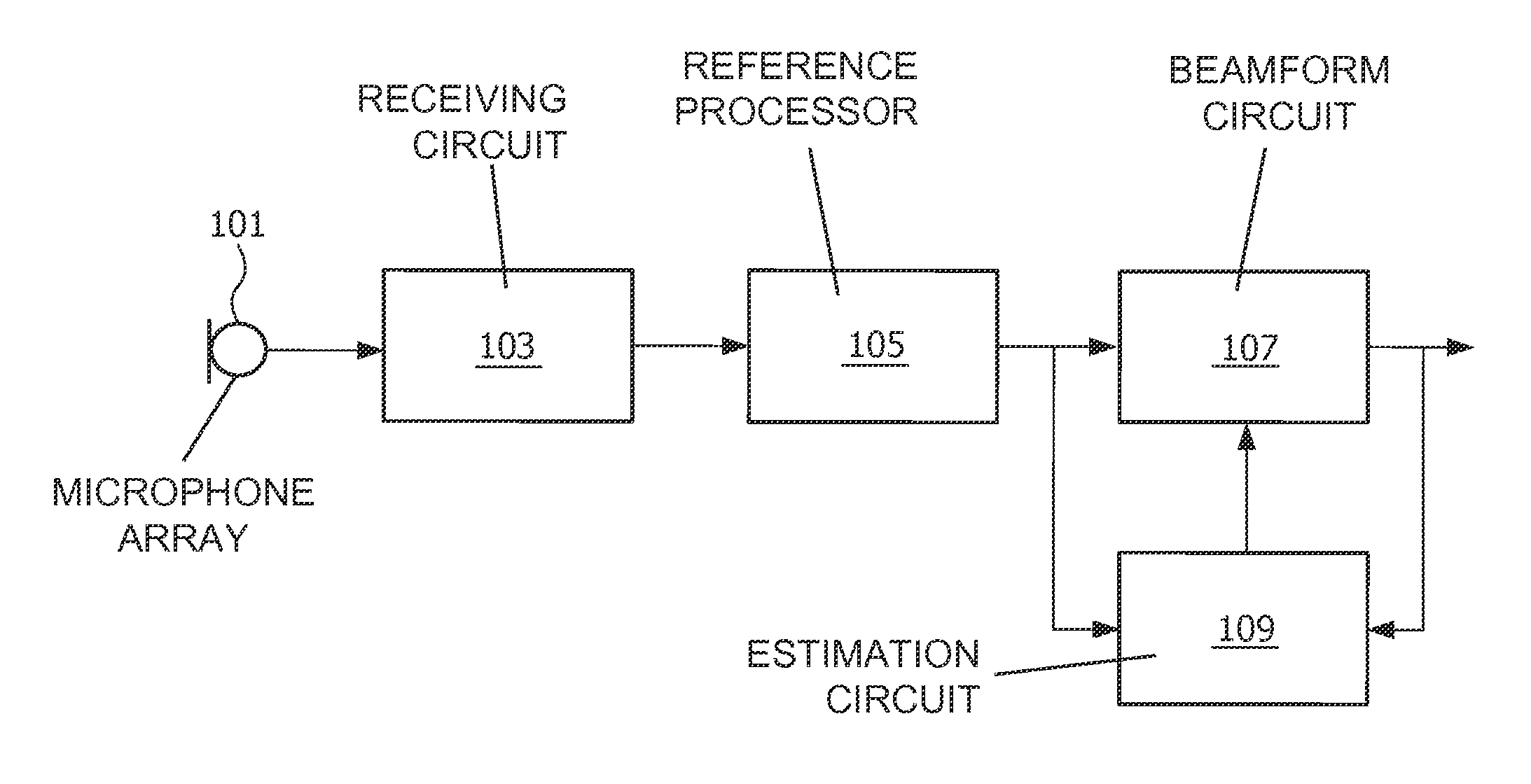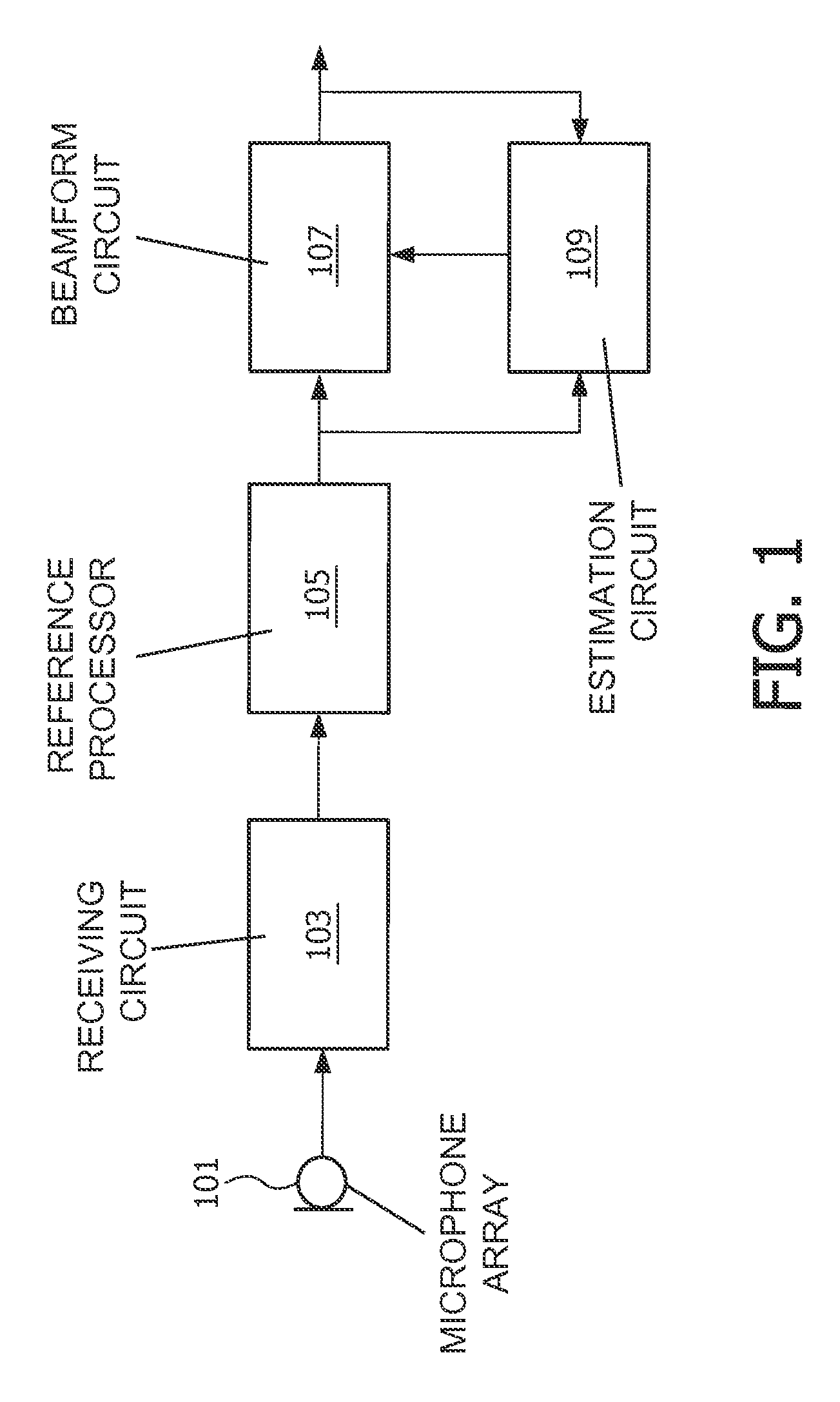Audio beamforming
a beamforming and audio technology, applied in the direction of transducer details, electrical transducers, signal processing, etc., can solve the problems of many beamforming algorithms, beamwidth deterioration, and inability to provide sufficient directivity, so as to improve the performance, improve the effect of facilitating the adaptation to the current audio environment and improve the performan
- Summary
- Abstract
- Description
- Claims
- Application Information
AI Technical Summary
Benefits of technology
Problems solved by technology
Method used
Image
Examples
Embodiment Construction
[0056]FIG. 1 illustrates an example of a system for capturing audio with an adaptable directional characteristic. The system processes signals from a plurality of microphones to generate a suitable desired beam pattern. The processing is specifically adapted such that the generated output signal has substantially improved noise and interference characteristics. The system provides for a joint improvement in both single point interference and diffuse noise performance. The system is furthermore suitable for use in scenarios wherein the wavelength of the signals is substantially longer than the dimensions of the microphone array, i.e. than the distances between the microphones.
[0057]The system processes the received microphone signals to generate a set of constant non-adaptable reference beams. These reference beams are then adaptively combined to generate a desired beam pattern. The combination is adapted such that the resulting beam form is adapted to cancel or substantially attenua...
PUM
 Login to View More
Login to View More Abstract
Description
Claims
Application Information
 Login to View More
Login to View More - R&D
- Intellectual Property
- Life Sciences
- Materials
- Tech Scout
- Unparalleled Data Quality
- Higher Quality Content
- 60% Fewer Hallucinations
Browse by: Latest US Patents, China's latest patents, Technical Efficacy Thesaurus, Application Domain, Technology Topic, Popular Technical Reports.
© 2025 PatSnap. All rights reserved.Legal|Privacy policy|Modern Slavery Act Transparency Statement|Sitemap|About US| Contact US: help@patsnap.com



